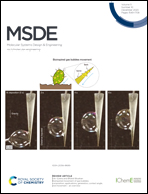Controlled sulfation of poly(vinyl alcohol) for biological and technical applications using response surface methodology†
Abstract
Sulfated polymers are widely used for diverse applications in chemistry and biology due to their polyanionic nature. Sulfated poly(vinyl alcohol) (SPVA) represents one of the most broadly useful sulfated polymers, which is built upon a simple, chemically robust, and generally non-toxic backbone. Although the partial sulfation of industrially produced polyvinyl alcohol (PVA) for technical applications has been broadly examined, systematic studies to target specific degrees-of-sulfation (DS) are rare. Moreover, the application of statistical design-of-experiments (DoE) methodologies has not been applied to resolve the importance of the many independent experimental variables that influence the DS value ultimately obtained (e.g. choice of sulfating reagent, reagent molar ratio, temperature, time, etc.). Following an extensive literature survey to establish boundary conditions, we used a Plackett–Burman screening design to eliminate non-significant variables and select SO3 : pyridine as the optimal sulfating reagent. Subsequent Box–Behnken response surface methodology allowed us to generate a statistically supported, predictive model, which enabled the selection of experimental parameters to obtain a defined DS value. This model was externally validated through the targeted production of SPVAs with predicted DS values of 40, 65 and 85% (actual 38, 62, and 84%) for anticoagulant and P-selectin protein-binding assays. The observed direct and inverse dependencies, respectively, of these two indicators on DS underscores the value of precise control of sulfation levels for biotechnological applications. Thus, this study presents a predictive tool to controllably sulfate the inexpensive and widely available PVA polymer for biological and other technical applications.



 Please wait while we load your content...
Please wait while we load your content...